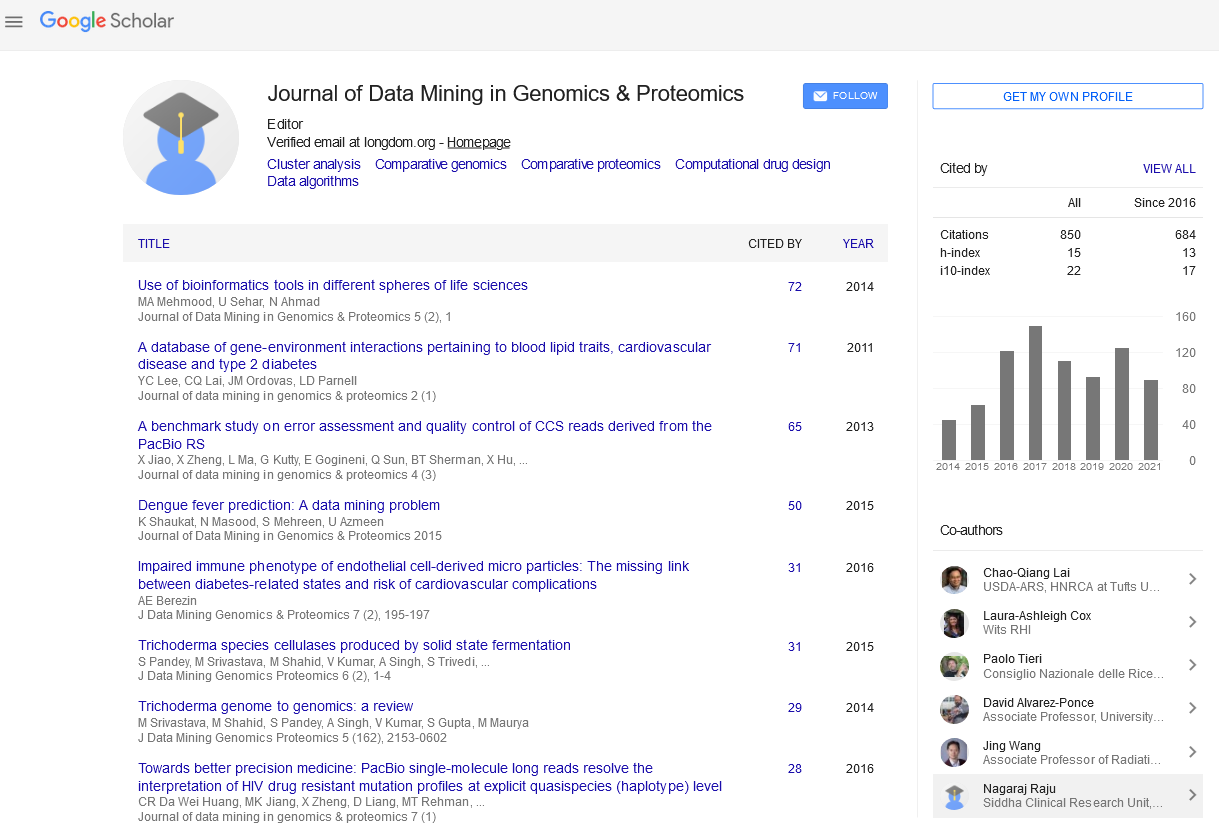PMC/PubMed Indexed Articles
Indexed In
- Academic Journals Database
- Open J Gate
- Genamics JournalSeek
- JournalTOCs
- ResearchBible
- Ulrich's Periodicals Directory
- Electronic Journals Library
- RefSeek
- Hamdard University
- EBSCO A-Z
- OCLC- WorldCat
- Scholarsteer
- SWB online catalog
- Virtual Library of Biology (vifabio)
- Publons
- MIAR
- Geneva Foundation for Medical Education and Research
- Euro Pub
- Google Scholar
Useful Links
Share This Page
Journal Flyer

Open Access Journals
- Agri and Aquaculture
- Biochemistry
- Bioinformatics & Systems Biology
- Business & Management
- Chemistry
- Clinical Sciences
- Engineering
- Food & Nutrition
- General Science
- Genetics & Molecular Biology
- Immunology & Microbiology
- Medical Sciences
- Neuroscience & Psychology
- Nursing & Health Care
- Pharmaceutical Sciences
Evolution and interaction complexity in phosphotyrosine signaling may contribute to cellular heterogeneity
2nd International Conference on Big Data Analysis and Data Mining
November 30-December 01, 2015 San Antonio, USA
Piers Nash
The University of Chicago, USA
Posters-Accepted Abstracts: J Data Mining Genomics Proteomics
Abstract:
Modular protein interaction domains (PIDs) are a common feature of many proteins, particularly those involved in cellular signal transduction. The SH2 domain recognizes phosphotyrosine modified peptide sequences, and in doing so couples tyrosine kinases to downstream signaling networks. Combining evolutionary analysis, bioinformatics, peptide and protein chemistry, biophysical and cell biological approaches we have analyzed SH2 domain interactions at a systems level. SH2 domains expand rapidly with the emergence of multicellularity and expand concomitant with leaps in organismal complexity within the animal lineage. Increasing connectivity within and between SH2 proteins may underlie more highly interconnected and robust signal transduction networks. The rapid evolutionary expansion of SH2 domains comes at some cost to selectivity so that the extant SH2 domains explore only a small region of the available peptide ligand sequence space. The ability of PIDs to nucleate highly selective interactions is essential for signal fidelity yet relies on limited peptide sequence information. SH2 domains overcome this by �??reading�?? interacting peptide motifs with linguistic complexity and make use of a wider information channel. This results in a complex language for SH2 domain-peptide interactions in which the SH2 domain is readily able to distinguish physicochemically similar amino acids. Despite evolutionary constraints, individual SH2 domains have distinct recognition profiles and exhibit a remarkable degree of selectivity. The potential interactomes for SH2 domain proteins within the Insulin, IGF-1, and FGF signaling systems show remarkable depth and complexity suggesting cell-type specific signaling may underlie some degree of cellular heterogeneity.
Biography :
Piers Nash received his Ph.D. from the University of Alberta, Canada, and completed postdoctoral studies with Tony Pawson at Mount Sinai Hospital and the University of Toronto. He served on the faculty at the University of Chicago from 2004 to 2012. He is currently is the Senior Director of Campaign Planning for Academic Research at the University of Chicago Medicine and Biological Sciences.


